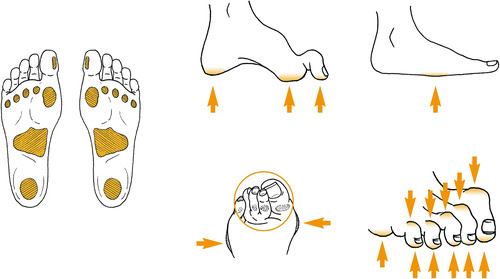How to Avoid Diabetic Septic Foot Problems
One of the big concerns for diabetics is the issue of foot care. For diabetics, no single scratch, wound or ulcer is too small to ignore and even the smallest of lesions have the potential to be the biggest problem due to the possibility of diabetic septic foot.
 |
| Credit image: https://onlinelibrary.wiley.com/doi/full/10.1002/dmrr.3266 |
Diabetes mellitus eventually causes damages in the neuropathy and circulatory system, which has great impact on the health and condition of an individual’s feet. When a person’s circulation is compromised, even small traumas that should heal quickly can persist and become infected. This is further worsened by diabetic neuropathy, which damages the nerves and prevents a person from assessing the gravity of foot problems. When the person doesn’t feel any pain, he or she tends to neglect the problem and this can lead to diabetic septic foot. If you are afflicted with diabetes mellitus, you should keep the following tips in mind:
First and foremost, diabetic septic feet does not happen instantly, and just develops from what other people would consider inconsequential. Be vigilant and don’t take any damage to your feet lightly, no matter how small or minor it is.
The most common aggregator of diabetic septic foot are improperly fitted shoes and socks. Abrasions resulting from the shoes pinching your soles or toes are definitely bad news. Make sure you only use a pair of shoes that fit perfectly and still “breathe”. Too loose a fit is just as bad as being too tight since the movement of the loose part may rub the skin off your feet and cause wounds that can become infected.
Closed shoes are bad venues for wounds since the feet’s sweat attract germs and bacteria that may infect wounds in your feet. Remember to always inspect your feet before putting your shoes on and after removing them. Don’t take anything for granted as anything out of the ordinary could escalate into a case of diabetic septic foot. Bunions, corns, splinters, blisters, ingrown toenails and even something as harmless to other people’s athlete’s foot fungus would require your immediate attention. When you see any one of these afflictions on your foot, you need to consult your physician right away.
You should conduct regular daily foot inspections. Sometimes even your nose and tactile faculties are enough to find out if something that shouldn’t be there or wasn’t there before has suddenly appeared. Swelling of areas, discomfort and itching and even unnecessary odors is an indication that something is wrong.
Every time you visit your doctor, you should ask to have your feet inspected even before he or she asks. This is important because your doctor may have ways of measuring the progress of your foot condition that is more effective than self testing especially if you’ve already been afflicted by neuropathy.
Last but not the least, keep your feet clean and practice good hygiene. Wash with pre-heated lukewarm water and mild soap, this greatly reduces the risk of infection even if you break the skin. If you follow these tips you will go a long way towards avoiding diabetic septic foot complaints in the future.
source: http://facts-about-diabetes.com
0 Response to "How to Avoid Diabetic Septic Foot Problems"
Post a Comment